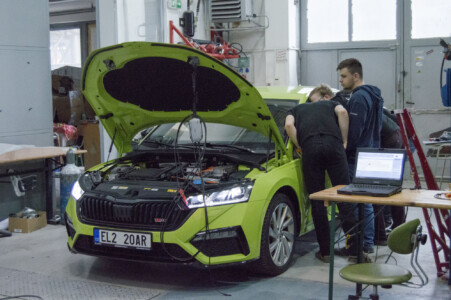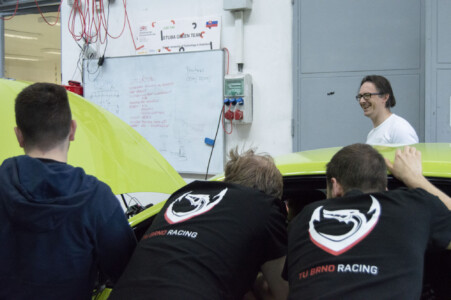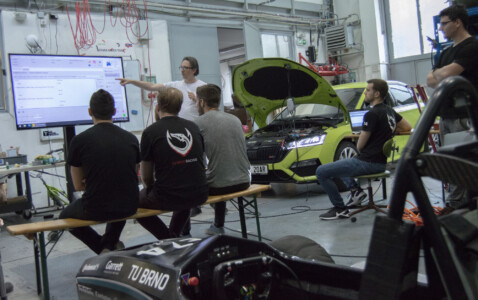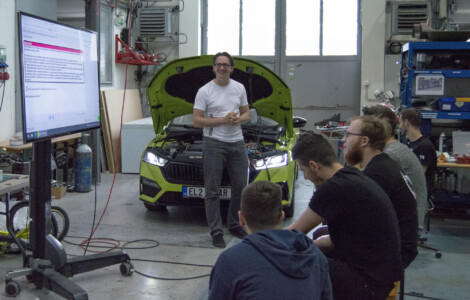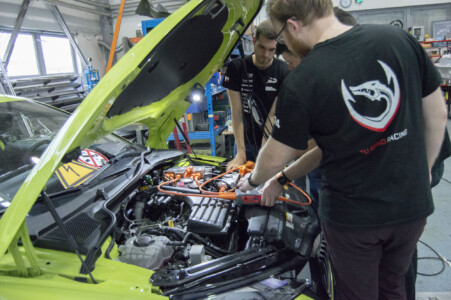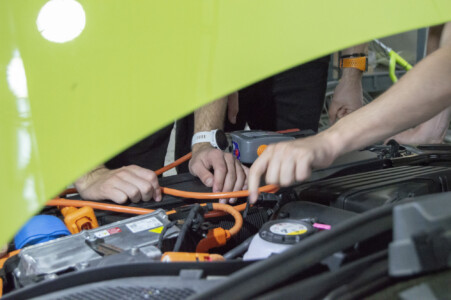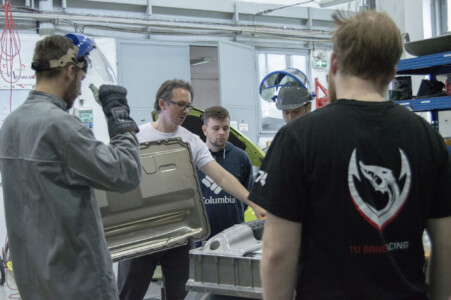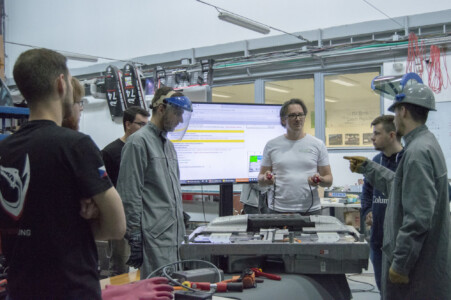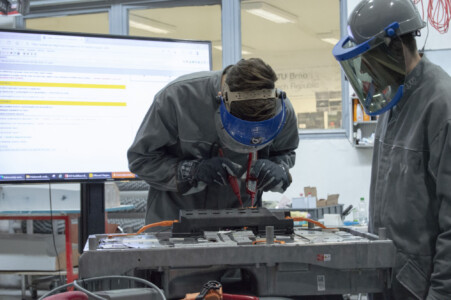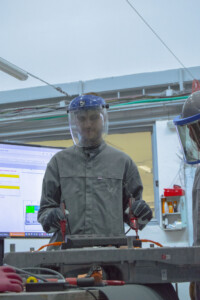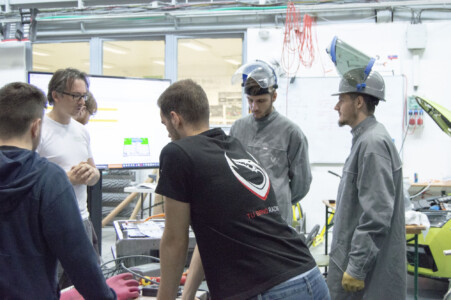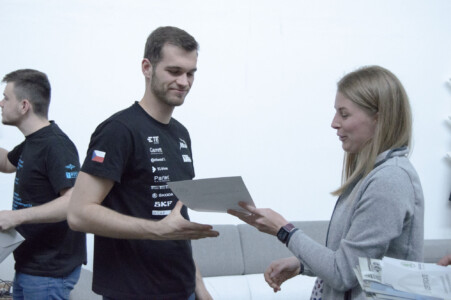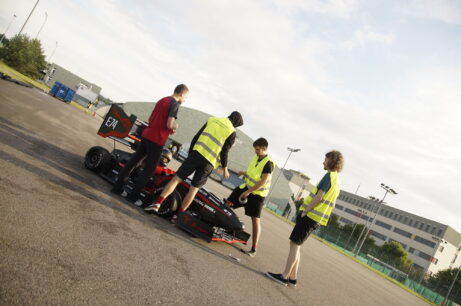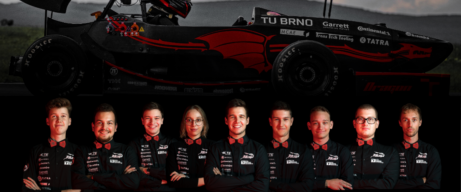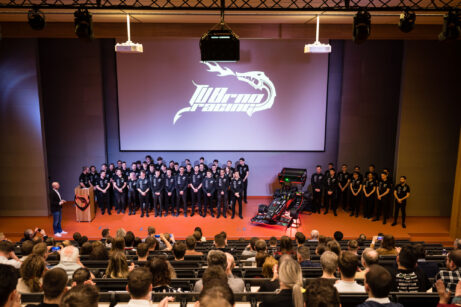Škoda Auto training guarantees us safety
With the transition from an internal combustion engine to an electric one, we have faced many challenges with the development of an electric monopost. One of the many ones is working with high voltage, because our battery has a voltage of 591.6 V, which, if mishandled, can cause a very high risk of danger such as burns or other injuries. Therefore, this work may only be performed by suitably qualified and educated professional personnel. Our partner Škoda Auto provided us with training on this topic to selected members of our team. They thus deepened their knowledge to the DGUV 209-093 2E qualification level in the field of safety and tested how to work safely on Škoda electric and hybrid cars.
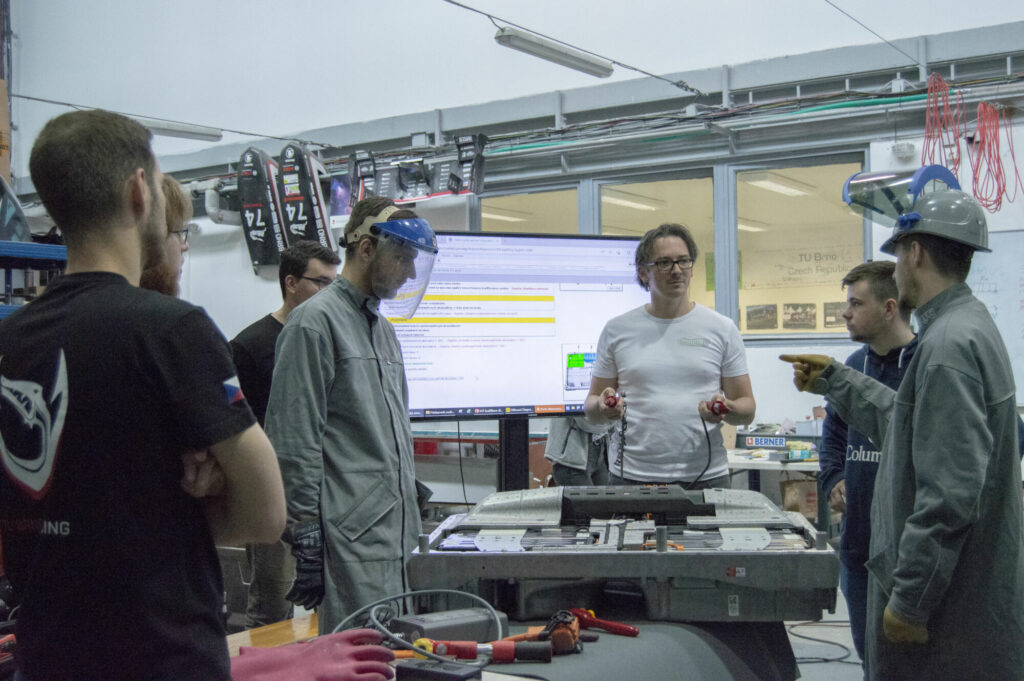
On the first day, the theoretical part of the training took place, the team members got acquainted with the rules of safe work with electric vehicles, batteries and design of an electric driven car, the safety procedures in case of electrical danger and first aid of what to do when the batteries burn.
The next day, the partner’s employees showed the vehicle’s service diagnostics and then, together with the team members, tested modern vehicle assistance systems, the driving dynamics of the hybrid and the electric car.
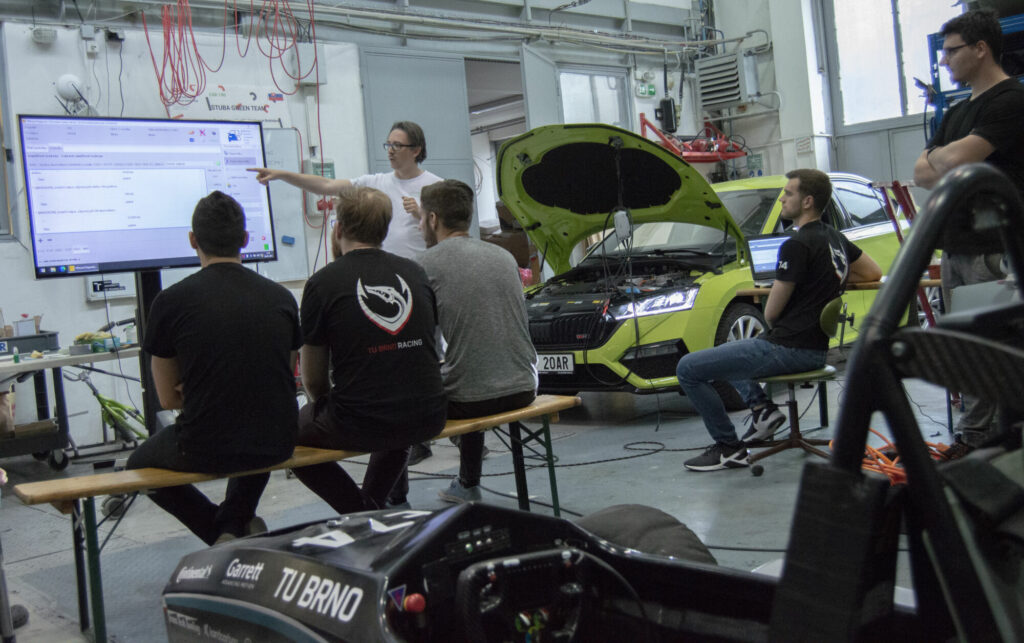
On the last day, they learned how to create a voltage-free state so that they could work safely on it. The trainers simulated a high-voltage system insulation fault so that team members could try to fix it. They examined the internal structure of the high-voltage battery of the Škoda hybrid vehicle and finally passed the qualification test, which is necessary for participation in the races, and especially for our safety.
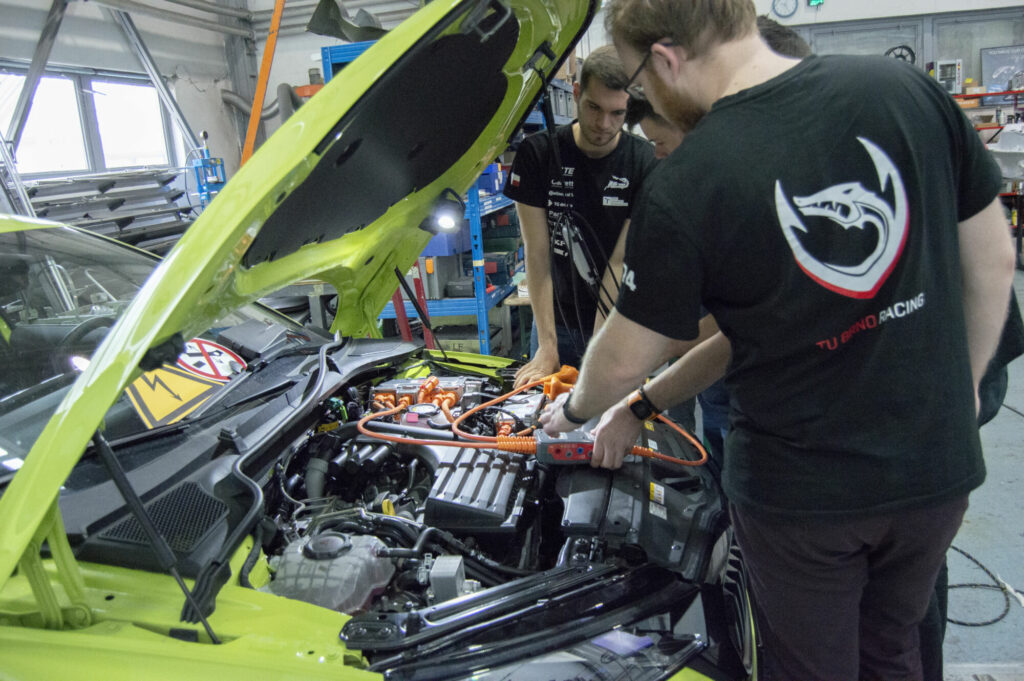
We will use this knowledge in the construction of our new electric monopost Dragon e2 and also in the upcoming years. We hope to meet again with our partner, Škoda Auto, at the training next season, perhaps at a higher qualification level, as our team intends to be at the forefront in all directions.

